#BMW eDrive
Video
youtube
The new 2024 BMW i5 eDrive40 Touring: power and range
0 notes
Photo

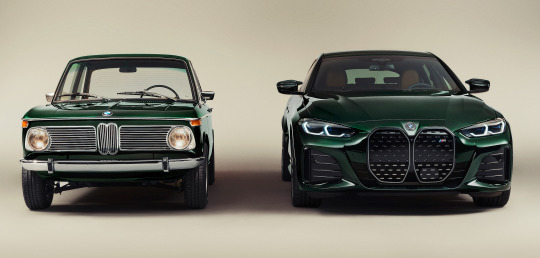
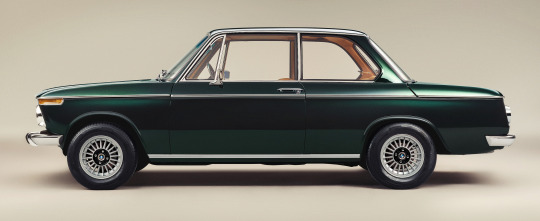



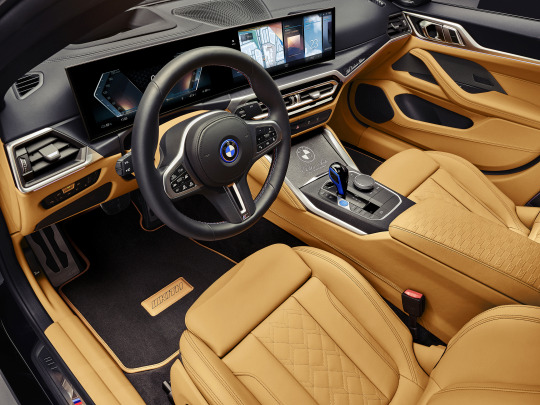


What a difference 50 years makes juxtaposition of BMW 1602 Elektro, 1972 & BMW i4 M50 by Kith, 2022. BMW have announced a second collaboration with fashion brand Kith and it’s founder Ronnie Fieg. The BMW 1602 Elektro refers back to the Munich Olympics of 1972 and the two electric 1602 models provided by BMW that were used at various long-distance competitions as accompanying and camera cars by the organisation committee. Both cars are finished in Kith Vitality Green with contrasting Caramel full-grain merino leather interiors, the the 1602 embossed with the Kith lettering. The i4 M50 by Kith will be limited to seven cars, each powered by two BMW M eDrive motors producing 400 kW (544 hp) in Sport Boost mode.
#BMW#Kith#BMW 1602 Elektro#BMW i4 M50#What a difference#50th anniversary#50 years#1972#2022#special edition#limited edition#Kith Vitality Green#Ronnie Fieg
415 notes
·
View notes
Photo


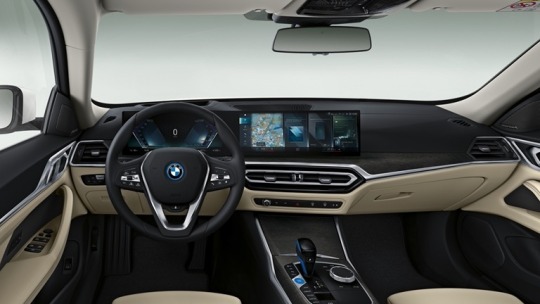
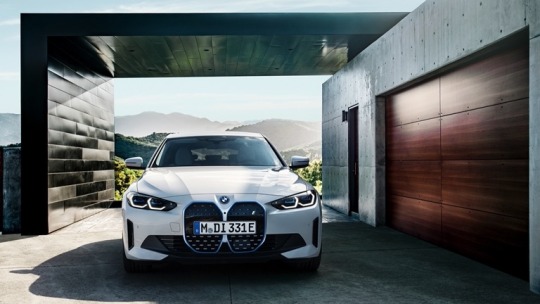
BMW i4 210kW eDrive 35 Electric Car Lease
In terms of capability this option will have a usable 67 kWh lithium-ion battery which will offer 0 – 62 times of 6.0 seconds, 118 mph top speeds and 210 kW (or 282hp). And the drivetrain will be RWD. Expect a combined winter range of 205 miles with warmer weather allowing for 285 miles on a full charge. On charging, the 11 kW AC max will allow 7 hour and 15 min 0 – 100% charging times with the 180 kW DC maximum allowing 31 minute 10 – 80% times. This car has a reasonable cargo volume of 470L and a vehicle fuel equivalent of 151 mpg. And the i4 35 can tow, with a 1600 kg (Braked) and 750kg (Unbraked) capability.
8 notes
·
View notes
Text
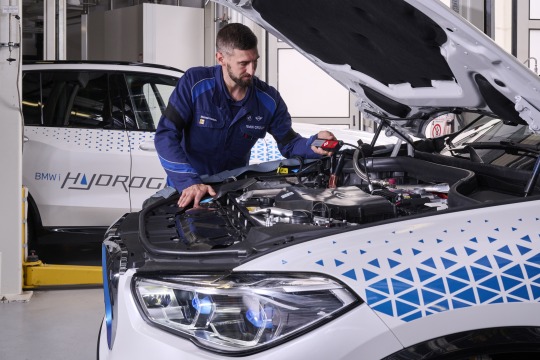



The BMW Group is commencing production of its BMW iX5 Hydrogen model. Manufacture of the small-series hydrogen-powered vehicle is taking place in the pilot plant at its Munich Research and Innovation Centre (FIZ). The first ever Sports Activity Vehicle (SAV) featuring hydrogen fuel cell technology has already completed an intensive programme of testing under demanding conditions during the development phase and will now be used as a technology demonstrator for locally carbon-free mobility in selected regions from spring 2023.
“Hydrogen is a versatile energy source that has a key role to play as we progress towards climate neutrality,” says Frank Weber, Member of the Board of Management of BMW AG responsible for Development. “We are certain that hydrogen is set to gain significantly in importance for individual mobility and therefore consider a mixture of battery and fuel cell electric drive systems to be a sensible approach in the long term. Fuel cells don’t require any critical raw materials such as cobalt, lithium or nickel either, so by investing in this type of drive system we are also strengthening the geopolitical resilience of the BMW Group. Our BMW iX5 Hydrogen test fleet will allow us to gain new and valuable insights, enabling us to present customers with an attractive product range once the hydrogen economy becomes a widespread reality.”
The BMW iX5 Hydrogen is being built in the BMW Group’s pilot plant at its Research and Innovation Centre in Munich. This is the interface between development and production where every new model from one of the company’s brands is made for the first time. Around 900 people work there in the body shop, assembly, model engineering, concept vehicle construction and additive manufacturing. They each work on up to six vehicle projects simultaneously and are tasked with ensuring that both the product and the manufacturing process are ready for series production. In the case of the BMW iX5 Hydrogen, specialists in hydrogen technology, vehicle development and initial assembly of new models have been working closely together to integrate the cutting-edge drive and energy storage technology.
“Production of the BMW iX5 Hydrogen and the BMW-developed fuel cell systems demonstrates our supreme flexibility and unrivalled know-how in the field of small-scale manufacture,” remarks Milan Nedeljković, Member of the Board of Management of BMW AG responsible for Production. “It shows we already boast the necessary expertise for integrating hydrogen technology into the BMW iFACTORY production system as an additional type of drive.”
BMW Group Plant Spartanburg in the USA supplies the base vehicles for the hydrogen model, which has been developed on the platform of the BMW X5. They are fitted with a new floor assembly in the pilot plant’s body shop that makes it possible to accommodate the two hydrogen tanks in the centre tunnel and under the rear seat unit. The model-specific 12V and 400V electrical systems, high-performance battery, electric motor and fuel cell are all integrated during the assembly stage, alongside standard production parts. Positioned in the rear axle area together with the high-performance battery, the electric motor is a product of the current, fifth-generation BMW eDrive technology also employed in battery electric and plug-in hybrid models from BMW. The fuel cell systems located under the bonnet of the BMW iX5 Hydrogen have been manufactured at BMW’s in-house competence centre for hydrogen in Garching to the north of Munich since August this year.
Numerous components are produced exclusively for the hydrogen-powered SAV, including some made at the Additive Manufacturing Campus – the BMW Group’s competence centre for 3D printing – which also forms part of the pilot plant. The BMW iX5 Hydrogen passes through all the customary stages of production, starting at the body shop then proceeding to the paint shop and assembly before ending with a final inspection of each individual vehicle. Following this, every vehicle undergoes a comprehensive operational check at the BMW Group’s test centre in Aschheim.
The BMW iX5 Hydrogen combines all the benefits of a locally emission-free drive system with outstanding everyday usability and long-distance capabilities. This makes its hydrogen fuel cell technology an attractive complementary alternative to the battery electric drive system. This is especially true for customers for whom short refuelling stops and long ranges are a must, as well as for regions still lacking an adequate charging infrastructure.
7 notes
·
View notes
Text


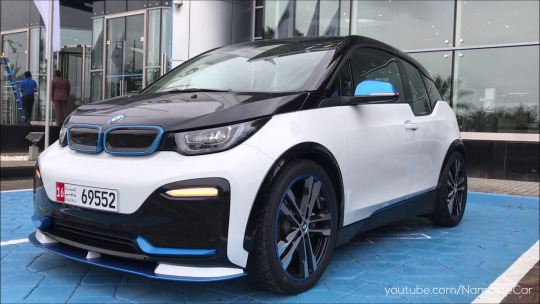

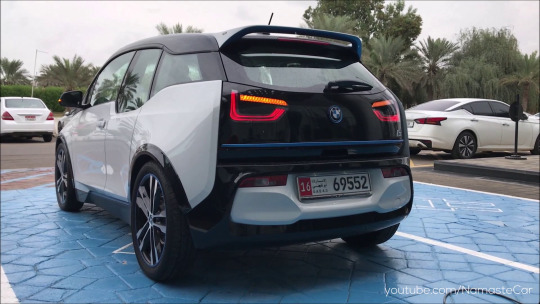
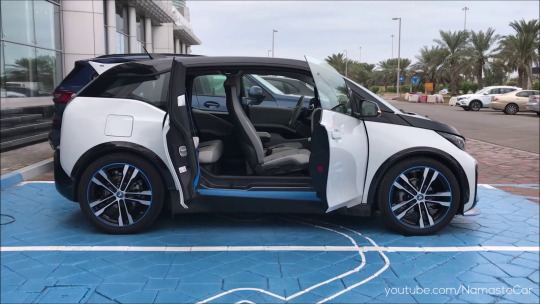


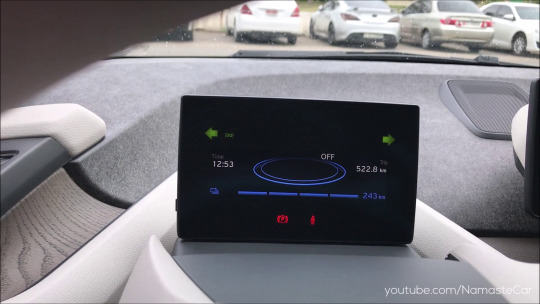
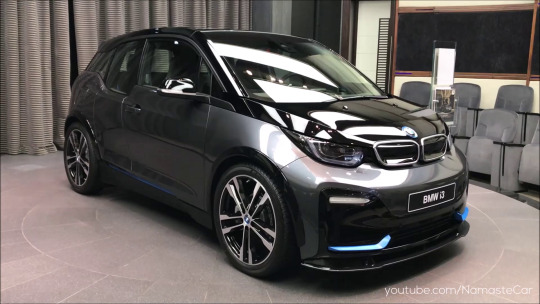

youtube
BMW i3s eDrive AC Schnitzer 2022- ₹33 lakh | Real-life review
1 note
·
View note
Text
Experimenta la emoción eléctrica con BMW i5 M60
New Post has been published on https://testercar.com/experimenta-la-emocion-electrica-con-bmw-i5-m60
Experimenta la emoción eléctrica con BMW i5 M60

El BMW i5 M60 es la versión más potente de la serie y ofrece deportividad en un modelo eléctrico, con un precio de 115.000 euros. BMW ha logrado una transición exitosa hacia los coches eléctricos, ofreciendo opciones tanto térmicas como eléctricas en su gama. El objetivo es adaptarse a las necesidades de cada cliente en todo el mundo.
Versatilidad en la Serie 5
El BMW i5 se integra perfectamente en la Serie 5, ofreciendo una alternativa a modelos como el Mercedes EQE o Tesla Model S. Disponible en versiones berlina y familiar, este modelo eléctrico comparte similitudes con sus homólogos térmicos en dimensiones y diseño.
La batería de 84 kW/h del i5 se sitúa en el suelo del maletero, lo que limita el espacio de carga a 490 litros. A pesar de esta restricción, el vehículo ofrece un amplio espacio para los cables de recarga, lo que lo convierte en un coche ideal para viajes familiares.
Excelente rendimiento y eficiencia
El BMW i5 M60, con más de 600 caballos de potencia, tiene un consumo homologado de 18,2 kWh/100 km. Su capacidad de recarga es otra de sus ventajas, con la posibilidad de cargar hasta 205 kW en corriente continua, lo que lo convierte en un coche preparado para viajes largos y recargas rápidas.
Comparado con otros coches eléctricos, el i5 destaca por su eficiencia y potencia de recarga, que permite pasar del 10 al 80% de la carga en solo 20 minutos en condiciones ideales.
Rapidez de recarga y versatilidad
La capacidad de recarga del BMW i5 M60 lo sitúa por encima de la mayoría de los coches eléctricos del mercado, asegurando un rendimiento óptimo en viajes largos. A pesar de su potencia, su eficiencia energética lo convierte en una opción atractiva para aquellos que buscan un coche eléctrico de alto rendimiento.
BMW i5 M60: Prueba de conducción de la berlina eléctrica de alta calidad en 2024
El BMW i5 M60 es un vehículo eléctrico de alta calidad y dimensiones similares a la Serie 5. Las plazas delanteras son espaciosas y cómodas, con asientos de gran calidad y soporte. El puesto de conducción cuenta con dos pantallas grandes y un head up display para facilitar la conducción.
Control por gestos y voz
La gestión por voz y los gestos funcionan bien, aunque pueden resultar algo lentos. Los modos de conducción son fáciles de manejar y, además de los modos normales, incluyen opciones sensoriales como Relax, Experience y Silent.
Modo “boost” y gestión de energía
Aunque el coche no tiene levas, cuenta con un modo automático que ajusta la retención de energía de manera eficiente. También posee una leva que activa el modo deportivo por unos segundos, proporcionando el máximo de potencia para situaciones especiales.
Gama de modelos y potencia
La gama del Serie 5 eléctrico incluye el eDrive 40 con 340 caballos, el xDrive40 con 394 caballos y el M60 con 601 caballos. Este último es el más potente y deportivo, con tracción a las cuatro ruedas. Su alto rendimiento impacta en el consumo y autonomía del vehículo.
El BMW i5 M60 ofrece una combinación única de potencia, autonomía y deportividad en la categoría de coches eléctricos de alta gama. Con una autonomía homologada de 515 km y una potencia máxima de 601 CV en modo Boost, este vehículo destaca por su rendimiento excepcional tanto en carretera como en ciudad.
Especificaciones del BMW i5 M60
El BMW i5 M60 cuenta con dos motores eléctricos, uno en el eje delantero de 261 CV y otro en el eje trasero de 340 CV. En condiciones normales, la potencia combinada es de 517 CV, pero al activar el modo Boost, la potencia máxima alcanza los 601 CV. Esto se traduce en una aceleración de 0 a 100 km/h en solo 3,8 segundos y una velocidad máxima de 230 km/h, valores impresionantes para un coche eléctrico de su categoría.
Autonomía y Rendimiento
Con una batería de 84 kWh, el BMW i5 M60 ofrece una autonomía homologada de 515 km en ciclo WLTP. Sin embargo, en condiciones reales, esta cifra puede variar y situarse por debajo de los 400 km si se conduce de manera más agresiva. A pesar de su alto rendimiento, este vehículo destaca por su comportamiento dinámico y su confort de marcha, convirtiéndolo en un gran coche tanto para largos viajes como para uso diario en la ciudad.
Precio y Competencia
Con un precio de partida de 114.000 euros, el BMW i5 M60 se sitúa en una franja similar a la de sus competidores directos, como el Mercedes EQE y sus variantes AMG. Aunque su precio es elevado, la combinación de potencia, autonomía y confort que ofrece lo convierten en una opción atractiva para aquellos que buscan un coche eléctrico de alta gama con un alto rendimiento y una experiencia de conducción emocionante.
En un mundo en constante evolución, la prueba del BMW i5 M60 demuestra que la deportividad eléctrica también es posible. Descubre cómo este vehículo innovador está marcando la diferencia en el mercado automotriz actual.
La revolución de la movilidad eléctrica: BMW i5 M60
La llegada del BMW i5 M60 al mercado ha supuesto una revolución en el mundo de la movilidad eléctrica. Con su diseño vanguardista y sus prestaciones de alta gama, este vehículo se posiciona como una alternativa a los coches tradicionales de combustión.
Un paso hacia la sostenibilidad
La sostenibilidad es uno de los pilares fundamentales del BMW i5 M60. Gracias a su motor eléctrico, este vehículo no emite gases contaminantes y contribuye a la reducción de la huella de carbono. Con una autonomía cada vez mayor y una infraestructura de carga en constante crecimiento, la movilidad eléctrica se consolida como una opción respetuosa con el medio ambiente.
Innovación y tecnología al servicio del conductor
Además de su compromiso con el medio ambiente, el BMW i5 M60 ofrece un alto nivel de innovación y tecnología. Desde su sistema de infoentretenimiento hasta sus asistentes de conducción avanzados, este vehículo brinda una experiencia de conducción única y segura. Conectividad, confort y eficiencia se combinan en un solo vehículo.
En definitiva, el BMW i5 M60 representa una nueva era en la industria automotriz, donde la deportividad eléctrica es una realidad palpable. Con su diseño sofisticado y sus prestaciones de alta gama, este vehículo se posiciona como una opción atractiva para aquellos que buscan un equilibrio entre rendimiento y sostenibilidad.Descubre cómo mantener tu coche en óptimas condiciones durante el invierno
En la época invernal, es fundamental prestar especial atención al mantenimiento de tu vehículo para garantizar un funcionamiento óptimo y seguro en las condiciones climáticas adversas. Sigue estos consejos para cuidar tu coche durante el invierno.
Revisión de neumáticos
Los neumáticos son un elemento clave en la seguridad de tu coche, especialmente en invierno. Asegúrate de que tengan la presión adecuada y un nivel de agarre óptimo para enfrentar la lluvia, la nieve o el hielo. Considera cambiar a neumáticos de invierno si vives en una zona con condiciones climáticas extremas.
Example
En lugar de los neumáticos estándar, opta por neumáticos de invierno que ofrecen un mejor rendimiento en la nieve y el hielo.
Mantenimiento del sistema de frenos
Es vital que el sistema de frenos de tu coche esté en perfectas condiciones durante el invierno. Realiza una revisión regular de los frenos para garantizar su correcto funcionamiento y reemplaza las pastillas o discos desgastados.
Example
Los frenos son cruciales para tu seguridad en la carretera, especialmente en condiciones climáticas invernales.
Cuidado de la batería
Las bajas temperaturas pueden reducir la vida útil de la batería de tu coche. Asegúrate de revisar su estado regularmente y mantén los bornes limpios y bien sujetos. Si la batería muestra signos de debilidad, considera reemplazarla antes de que te deje tirado en pleno invierno.
Example
Una batería en buen estado es esencial para arrancar tu coche en las frías mañanas de invierno.
el mantenimiento adecuado de tu coche durante el invierno es fundamental para garantizar tu seguridad en la carretera. Sigue estos consejos y presta atención a los elementos clave como los neumáticos, los frenos y la batería para disfrutar de un viaje tranquilo y sin contratiempos en la época más fría del año.
0 notes
Text
How Does The BMW X4 Engine Adapt To New Technologies And Regulations?

The automotive industry is undergoing rapid changes, driven by technological advancements and stricter regulations aimed at reducing environmental impact and improving vehicle safety. One such vehicle that exemplifies the integration of new technologies and compliance with evolving regulations is the BMW X4. This high-performance Sports Activity Coupe (SAC) demonstrates BMW's commitment to innovation, sustainability, and compliance with industry standards.
Adapting to Emission Standards
The BMW X4 engines is designed with cutting-edge technology to meet strict global emission regulations, such as Euro 6 and U.S. EPA Tier 3 standards. BMW incorporates advanced exhaust treatment systems like Selective Catalytic Reduction (SCR) and Diesel Particulate Filters (DPF) to significantly reduce harmful emissions like NOx and particulate matter. In the case of the diesel variants, the use of AdBlue solution helps to neutralize nitrogen oxides, ensuring that the engine remains environmentally compliant.
With the increasing pressure to reduce greenhouse gas emissions, BMW has embraced hybrid and mild-hybrid technologies in the X4 lineup. This ensures the engine meets the demands of eco-conscious consumers and regulators alike. By adapting to these emissions standards, the X4 continues to offer powerful performance while minimizing its environmental footprint.
Integration of Hybrid Technology
One of the key ways the BMW X4 engine adapts to new technologies is through the integration of hybrid powertrains. The plug-in hybrid variant of the X4 combines an internal combustion engine with an electric motor, allowing drivers to enjoy zero-emission driving in urban environments while maintaining the power and range of a traditional engine for long-distance travel. This hybrid system is not just about emission reduction; it also enhances fuel efficiency.
BMW has leveraged its eDrive technology to make hybrid powertrains a staple in its lineup, including the X4. This technology allows seamless transitions between electric and gasoline power, ensuring optimal performance while adhering to modern regulations. For those looking for sustainable yet high-performance vehicles, engine replacement and supply and fit services for hybrid models are increasingly becoming available.
Enhanced Fuel Efficiency Through Turbocharging
Turbocharging plays a significant role in the BMW X4’s adaptation to new performance and fuel efficiency standards. Turbocharged engines allow the X4 to deliver impressive power without consuming excessive fuel. By using smaller, more efficient engines with turbocharging, BMW achieves a balance between power and fuel economy, critical in meeting stringent fuel efficiency regulations such as the Corporate Average Fuel Economy (CAFE) standards in the U.S.
The twin-scroll turbocharger technology in the X4 ensures that there is minimal turbo lag, providing drivers with immediate and sustained power. Additionally, turbocharging contributes to the engine's adaptability, making it more suitable for both everyday driving and more demanding conditions. For owners needing engine replacement, reconditioned engines fitted with modern turbocharging systems offer a cost-effective way to maintain peak performance.
Implementation of Lightweight Materials
One of the major adaptations in the BMW X4 engine's design involves the use of lightweight materials. Modern engines, including those in the X4, benefit from lighter aluminum blocks and high-strength alloys. These materials not only reduce the overall weight of the vehicle but also improve engine efficiency by reducing the load on the powertrain.
By adopting lightweight materials, BMW aligns with regulations aimed at reducing vehicle weight to improve fuel economy and lower emissions. The X4’s lightweight construction also supports the vehicle’s dynamic handling and performance. Replacing a worn-out engine with a reconditioned one that includes these materials ensures continued compliance with fuel efficiency standards and offers a smooth driving experience, with supply and fit services readily available.
Compliance with Safety and Performance Regulations
Safety regulations are another critical area where the BMW X4 engine has adapted. The vehicle meets strict safety performance standards, including those that govern engine reliability and the integration of safety systems such as anti-lock brakes (ABS) and traction control. The engine is also designed to work in harmony with these systems to provide better stability and safety under various driving conditions.
BMW equips the X4 with adaptive engine management systems that monitor and adjust performance based on real-time data. These systems ensure that the vehicle operates safely within regulated parameters, such as limiting torque during low-traction conditions. Should an engine require replacement, reconditioned engines with advanced safety features can be installed through supply and fit services, ensuring the vehicle continues to meet all safety regulations.
Optimizing for Different Fuel Types
With the shift toward sustainable energy sources, BMW has ensured that the X4 engine is compatible with various fuel types. While the internal combustion engine still relies on gasoline and diesel, BMW has incorporated flex-fuel technology and biofuel compatibility to adapt to greener alternatives. This flexibility ensures that the engine can operate efficiently regardless of the fuel source, aligning with the push towards reducing fossil fuel dependency.
BMW's engineering in the X4 enables the engine to perform optimally on different fuel grades and blends, including biofuels and synthetic fuels. This adaptation is crucial as more regulations favor alternative energy sources. In the event of engine wear or damage, supply and fit services for reconditioned engines are available to provide eco-friendly options for replacement.
Electric Vehicle (EV) Integration and Future Readiness
While the current BMW X4 lineup includes internal combustion and hybrid engines, BMW is preparing for a future dominated by electric vehicles. As part of BMW’s overall strategy, the X4 engine architecture has been designed with potential EV integration in mind. Although a fully electric X4 has not yet been released, BMW’s focus on EV technology ensures that the platform will be ready when regulations demand a transition to zero-emission vehicles.
BMW’s flexible engine architecture allows for easy adaptation to future EV technologies, making the X4 a future-proof option for consumers. For those who prefer traditional powertrains, engine replacement and reconditioned engines remain viable options for keeping older models compliant with evolving regulations, while also benefiting from modern supply and fit services.
Aftermarket Solutions: Engine Replacement and Reconditioned Engines
For BMW X4 owners looking to extend the life of their vehicle while staying compliant with the latest technologies and regulations, aftermarket solutions like engine replacement and reconditioned engines are essential. Whether due to wear and tear or the desire for improved performance, replacing an engine with a modern, reconditioned unit can restore the vehicle’s capabilities.
Reconditioned engines for the X4 are rebuilt to meet current performance and environmental standards, often incorporating the latest technologies like turbocharging and hybrid compatibility. Supply and fit services make it convenient for owners to get their vehicle back on the road quickly, with the assurance that the replacement engine meets all regulatory requirements.
Read the full article
0 notes
Text
0 notes
Text
BMW Unveils Vision Neue Klasse X SUV Concept: A Glimpse into Future Electric SUVs
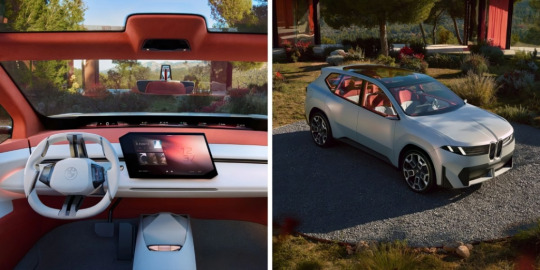
BMW has once again pushed the boundaries of automotive design and sustainability with the unveiling of its latest concept, the Vision Neue Klasse X SUV. This futuristic electric SUV concept not only showcases BMW's commitment to advanced technology but also highlights the brand's dedication to using recycled materials for a more sustainable future.
One of the most striking aspects of the Vision Neue Klasse X concept is its distinctive design elements that blend classic BMW aesthetics with modern innovations. The iconic kidney grille has been reimagined with two tall and thin elements, paying homage to BMW's heritage while embracing a forward-looking approach. LED lights frame the grille, creating an imposing and upright front fascia that exudes confidence and power. The rear of the SUV features new L-shaped taillights, adding a contemporary touch, while the classic Hofmeister kink on the C-pillar maintains a link to BMW's design legacy.
What sets the Vision Neue Klasse X concept apart is its use of recycled mono-materials throughout the vehicle. This not only promotes sustainability by reducing waste but also demonstrates BMW's commitment to cost-effective and eco-friendly manufacturing practices.
Inside the cabin, the concept continues to impress with innovative features and a futuristic design language. A large infotainment screen takes center stage, accompanied by the BMW Panoramic Vision display that spans the width of the windscreen, providing drivers with a seamless and immersive digital experience. The steering wheel has been redesigned to incorporate haptic controls, offering intuitive access to various functions while enhancing driver comfort and convenience. Moreover, the extensive use of recycled materials in the interior underscores BMW's holistic approach to sustainability.
Under the hood, the Vision Neue Klasse X concept is powered by BMW's sixth-generation eDrive system, featuring new motors and advanced lithium-ion battery cells. These upgrades translate to improved performance, efficiency, and range, with BMW boasting a 25% increase in efficiency and a 30% boost in range compared to previous models. Additionally, the concept adopts an 800-volt electrical architecture for faster charging, making it compatible with 150 kW DC chargers and enhancing the overall ownership experience for electric vehicle drivers.
In terms of technology, the Vision Neue Klasse X concept is equipped with cutting-edge computing systems, including the 'heart of joy,' which enhances driver assistance features and processes functions five times faster than current technology. This ensures a seamless and responsive driving experience, particularly on performance-focused models.
Production of the first vehicle based on the Vision Neue Klasse X concept is set to begin at BMW's Debrecen facility in Hungary, with further details about the finalized version expected to be unveiled later this year. As BMW continues to lead the way in electric vehicle innovation, the Vision Neue Klasse X concept represents a glimpse into the future of sustainable and high-performance SUVs.
Also Read
850+ GLIDA Stations Now Mobile with Statiq App!
0 notes
Video
vimeo
This is what BMW thinks the car of the Future will be. from Our Auto Expert on Vimeo.
Have you ever wondered what the future of driving holds? Buckle up because BMW is about to redefine the way we drive. At a covert location in Portugal, the automotive giant unveiled its game-changing BMW Neue Klasse X, set to hit the streets in 2025. This offers a glimpse into the automotive future like never before.
Picture this: a car that's not just a mode of transportation but a personal assistant on wheels. With around 100 million Alexas in the world, BMW is tapping into this trend, seamlessly integrating a virtual assistant into the architecture of its upcoming vehicles. Say hello to the BMW Vision Neue Klasse X, promising a driving experience unlike any other, blending dynamic performance, efficiency, and pure fun into one sleek package.
But let's talk tech. One of the biggest hurdles for electric vehicles has been range anxiety and charging infrastructure. BMW is flipping the script with the Neue Klasse X, boasting 30% faster charging and a 30% increase in range thanks to cutting-edge battery chemistry, making greener travel more accessible than ever.
And innovation shines not just under the hood. The Neue Klasse X’s design is a masterclass in sophistication, with a streamlined exterior and a spacious, tech-forward interior that's sure to turn heads. Plus, with advancements in lighting technology, BMW manages to blend iconic design elements like the kidney-shaped grill with modern touches, like a reflective badge that adds flair without sacrificing legality.
Inside, drivers will find the sixth generation of BMW eDrive technology, delivering enhanced efficiency and performance. But perhaps the most exciting feature is the integration of virtual assistants, capable of executing multiple commands with a simple voice prompt, making driving more intuitive and convenient than ever before.
And speaking of personalization, BMW is putting the power in the driver's hands. From customizable dashboard screens to the ability to design the sound of your own ride, the Neue Klasse X caters to individual preferences like never before, ushering in a new era of automotive personalization.
But it's not all about bells and whistles. Sustainability takes center stage with the Neue Klasse X, featuring plant-based interior materials and recycled plastics to minimize its environmental impact. With BMW's commitment to running Plant Debrecen on fossil-free energy, the company is leading the charge towards a cleaner, greener future.
So what's next? The BMW Neue Klasse X is nearly ready for market, with just a few tweaks needed before it hits showrooms.
0 notes
Text







In terms of the car shown, the BMW i4 GRAN COUPE 250kW eDrive40 M Sport 83.9kWh 5dr Auto [Tech Pack] Pure (PEV), this is based on the following configuration: Black Sapphire - Metallic Paint Alcantara/Sensatec - Black with contrast stitching in blue Aluminium rhombicle anthracite interior trim 18" M aerodynamic alloy wheels in bicolour with mixed tyres - style 858M Mode 3 charging cable And how does the BMW i4 perform? I4 eDrive 40 - with a 81 kWh usable lithium-ion battery this RWD car will offer 0 – 62 times of 5.6 seconds, 118 mph top speeds and 250 kW (or 335 hp). Expect a combined winter range of 265 miles with warmer weather allowing for 370 miles - a combined range of 320 miles. On charging, the 11 kW AC max will allow 8 hour and 45 minute 0 – 100% charging times with the 207kW DC maximum allowing 31 minute 10 – 80% times. This has a fuel equivalent of 159mpg. And the Heat Pump is standard. It has a 470L cargo volume. There will be a towing capacity of 1600g (Braked) and 750kg (Unbraked). There is no Bidirectional charging with this car confirmed.
1 note
·
View note
Text
0 notes
Text
The Evolution of EV Powertrain in Europe: A Sustainable Drive for the Future
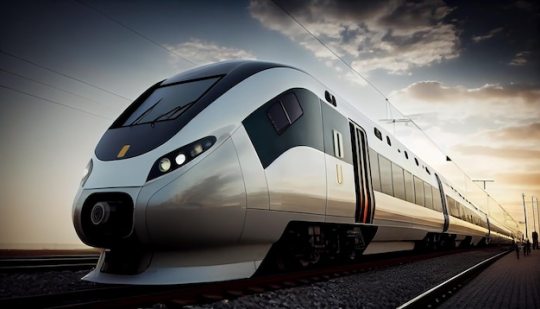
The Evolution of EV Powertrain in Europe: A Sustainable Drive for the Future
Introduction:
The electric vehicle (EV) revolution is taking the automotive industry by storm, focusing significantly on sustainability and reducing carbon emissions. Europe, in particular, is at the forefront of this green mobility shift, leading the way in adopting EVs and developing advanced electric powertrains. In this article, we will explore the evolving landscape of EV powertrains in Europe, delving into the latest advancements and their role in shaping transportation's future.
The Rise of EVs in Europe
Europe has been making substantial strides in the adoption of electric vehicles. In 2020, EV sales accounted for approximately 10% of total passenger car sales in Europe, a notable increase from previous years. This surge includes governmental incentives, stricter emissions regulations, and growing consumer environmental awareness.
The Heart of EVs – Powertrains
At the core of every electric vehicle lies the powertrain, the complex system responsible for converting electrical energy into motion. In essence, the powertrain replaces conventional vehicles' traditional internal combustion engine and transmission. Let's take a closer look at the components of an EV powertrain.
Battery: The battery pack is the energy source for EVs. It stores electricity and provides the required energy to power the electric motor. Advances in battery technology, such as lithium-ion and solid-state batteries, have significantly increased the range and performance of EVs.
Electric Motor: EVs are equipped with electric motors that convert electrical energy from the battery into mechanical energy to drive the wheels. These motors are highly efficient and produce instant torque, resulting in a smooth and responsive driving experience.
Power Electronics: Power electronics manage the flow of electricity between the battery and the electric motor. They control the motor's speed, torque, and direction, ensuring optimal vehicle performance.
Transmission: Many electric vehicles have a single-speed transmission due to the broad torque range of electric motors. This simplicity reduces maintenance and enhances overall efficiency.
Europe's Role in Advancing EV Powertrains
Europe is home to several key players in the electric vehicle industry. Companies such as Volkswagen, BMW, and Tesla have been pivotal in driving innovation in EV powertrains. Here are some notable advancements from these European automakers:
Volkswagen: Volkswagen's ID.3 and ID.4 models feature the Modular Electric Drive Toolkit (MEB), a platform specifically designed for electric vehicles. This platform enhances scalability and allows Volkswagen to produce various EV models.
BMW: BMW's electric i4 sedan boasts the fifth-generation eDrive system, combining the electric motor, power electronics, and transmission into a single housing. This integrated design optimizes space and increases power density.
Tesla: Although based in the United States, Tesla has a significant presence in Europe and has contributed to EV powertrain advancements. The company's focus on continuous over-the-air updates has allowed them to improve their powertrains and introduce new features to existing vehicles.
Future Developments in EV Powertrains
As Europe continues to lead the EV revolution, it's crucial to understand the upcoming developments in EV powertrains that will shape the future of transportation. Here are some key trends to watch for:
Enhanced Battery Technology: Ongoing research in battery technology will lead to even higher energy density, faster charging, and longer-lasting batteries, reducing range anxiety.
Sustainable Materials: Automakers actively seek sustainable materials for EV components to minimize their environmental footprint. This includes using recycled materials in powertrain components.
Autonomous Driving Integration: Integrating advanced driver-assistance systems (ADAS) and autonomous driving features will require sophisticated powertrain solutions to support the additional computational demands.
Conclusion:
Europe is spearheading the transition to electric vehicles and pioneering advancements in EV powertrains. With a concerted focus on reducing carbon emissions and increasing sustainability, the region is leading the way in shaping the future of transportation. As battery technology, electric motors, and power electronics evolve, the European EV market is set to play a pivotal role in achieving a more sustainable and eco-friendly automotive landscape.
0 notes